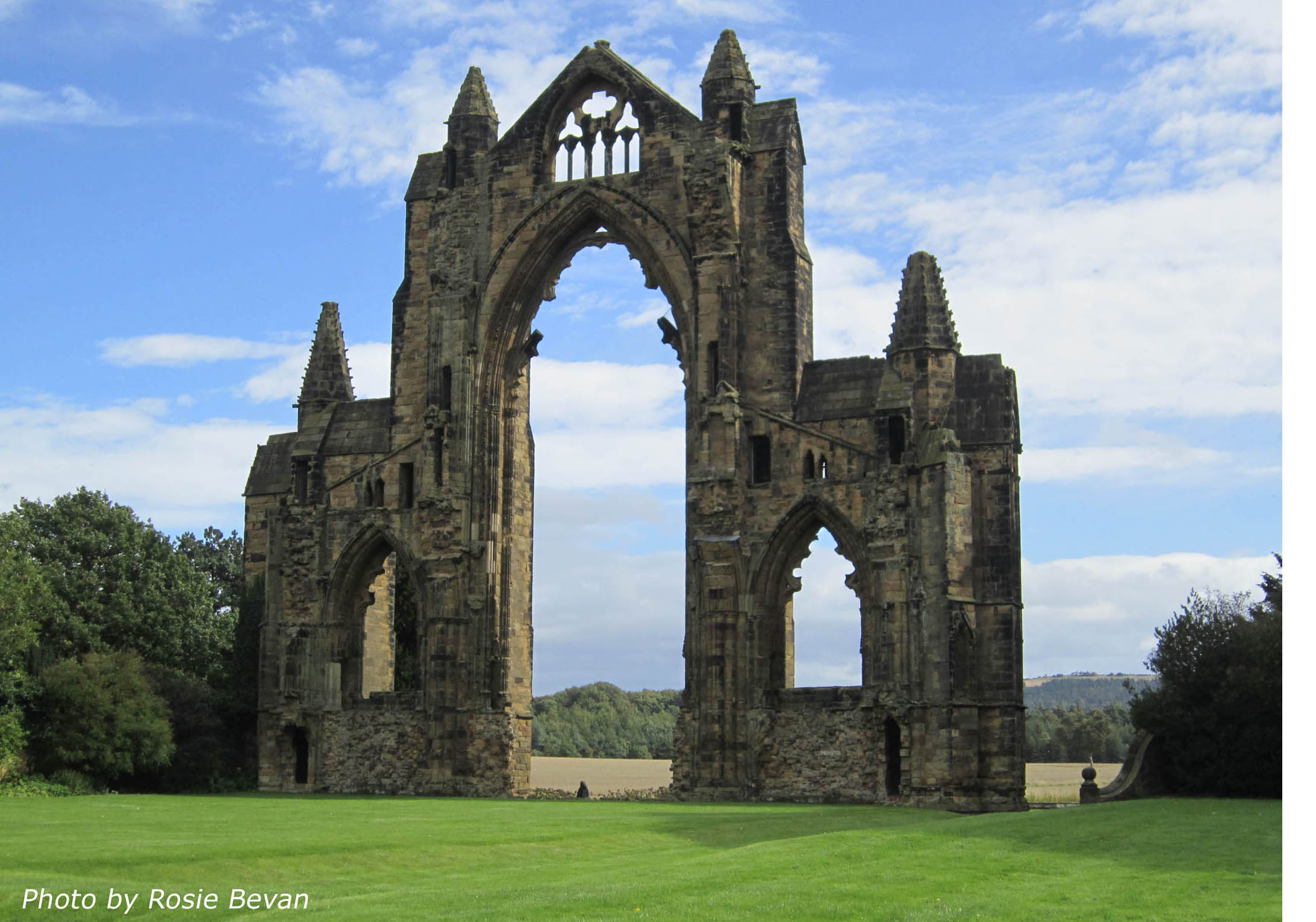Foundations Volume 5

This volume is now on open access and anyone can view or download articles.
The east end of Gisborough Priory, Yorkshire
Founded in 1119 by Robert de Brus, the original Romanesque building was destroyed by fire in the late 13th century. The present ruins date from the 14th century.
See the article "Keeping it in the family" by Rosie Bevan, in this issue.
by Rosie Bevan [1]
Abstract
This paper explores evidence that Joan, the wife of Peter de Brus, Lord of Skelton was a sister of Roger de Lacy, Constable of Chester, and by tracing the devolution of her marriage portion of an estate in Knottingley, into the Meinell family, the author concludes that it was common descent from this couple which caused serious problems for their descendants, Nicholas de Meinell and Lucy de Thweng, whose notorious love affair, resulted in accusations of incest by the church.
Foundations (2013) 5: 3-36 © Copyright FMG and the author
Abstract
England’s Immigrants 1330-1550 is a major research project, funded by the Arts and Humanities Research Council, that is now in the second year of its three-year timescale. The project is exploring the extensive archival evidence about the names, origins, occupations and households of a significant number of foreigners who chose to make their lives and livelihoods in England in the era of the Hundred Years War, the Wars of the Roses, and the early stages of the Reformation. The outcomes of the project will contribute creatively to the longer-term history of immigration to England, and will prove to be an invaluable resource to genealogists and local historians. This paper outlines the fundamentals of the research being undertaken, a survey of the sources and their historical significance, and the wider historiographical context of the project. It also reveals some of the project’s findings, namely in the City of London, Bedfordshire and Buckinghamshire, and Yorkshire.
Foundations (2013) 5: 37-51 © Copyright FMG and the author
by Dorothea Rowse[1]
Abstract
Richard de Belmeis (d.1127/8) is a man as famous for being a pluralist as for being a Bishop of London. References to him invariably refer to the numbers of Belmeis relatives who found employment at St Paul’s Cathedral, many as members of Chapter. Robert Eyton in his Antiquities of Shropshire dealt in some detail with Richard’s career and the Belmeis family genealogy.[2] While largely correct, it has been possible to do greater justice to Richard and to the Belmeis family at St Paul’s using more recent published resources.
Foundations (2013) 5: 53-64 © Copyright FMG and the author
by Michael P Bodman[1]
Abstract
William Tazewell, immigrant to Virginia in 1715 with a prominent descendancy, has long been the subject of American genealogical interest but his origin and ancestry had not been documented. Recently-published visitations, corroborated by wills and deeds, show the Virginia settler’s maternal grandmother to be a member of the family of Reade of Faccombe, Hampshire, which also produced another prominent Virginia settler, Colonel George Reade, a great-grandfather of George Washington, first President of the United States. Colonel George Reade had long been known to have demonstrable medieval ancestry, including lines from King Edward III, through his great-grandmother Frances Dymoke, wife of Sir Thomas Windebank. This article documents the sixteenth- and seventeenth-century generations by which William Tazewell of Virginia shares this medieval ancestry via Windebank, Reade, Kingsmill and Tazewell. It concludes with new heraldic information on the Reade and Tazewell arms.
Foundations (2013) 5: 65-76 © Copyright FMG and the author
by William Tracy Erbes[1]
Short Communication
Foundations (2013) 5: 77-79 © Copyright FMG and the author
Introduction
Records of European pilgrimage to the Holy Land begin in the early fourth century.[2] Yet, our notions of crusade do not develop until some years following Saladin’s capture of Jerusalem. The Spanish term cruzada emerges in the thirteenth century, appears in English as croisade about 1575, but does not become the recognizable word crusade until the early eighteen century.[3] To their contemporaries, all Englishmen travelling cruce signatus to the Holy Land during the years of the first three crusades were pilgrims. Only in recent centuries are these armed pilgrims rebranded as crusaders.
by Armin Wolf[2]
Short Communication
This note is a supplement to the author’s article “Who was Agatha? The Ancestress of Scottish and English Kings,” Foundations 3(6) (2011): 503-523, especially pp.514ff.
Foundations (2013) 5: 80 © Copyright FMG and the author
by Wout van Voornveld [1]
Abstract
The Fournival family is known to historians primarily for its Yorkshire baronies and their participation in the crusades. Relatively little is available in the English speaking community with regard to their twelfth century origins. This article is a first attempt to scratch the surface of a predominantly continental period.
Foundations (2013) 5: 81-101 © Copyright FMG and the author
Reviewed for FMG by Dr Nick Barratt[1]
A review of this book representing over 30 years of scholarship by Dr Neil D Thompson and Col. Charles M Hanson. The ancestry tables were serialised in The Genealogist between 1981 and 2012, and are now published in a single hard back volume.
Published by The American Society of Genealogists, 2012
ISBN 978-0-615-57920-7
reviewed in Foundations (2013) 5: 102 © Copyright FMG and the review author



